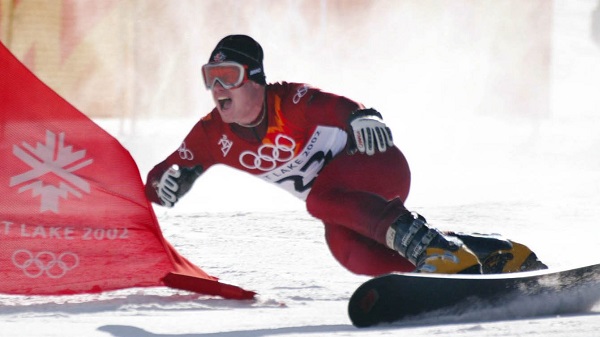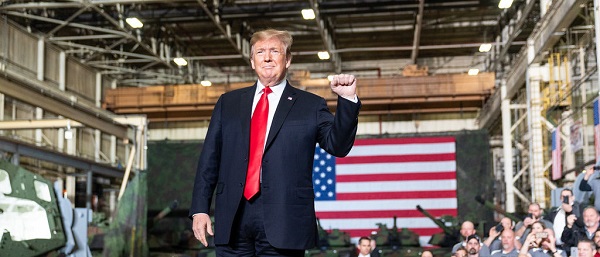Alberta
Alberta government should finally undo tax hikes and help restore province’s advantage

From the Fraser Institute
By Tegan Hill
During the election campaign, Danielle Smith promised to create a new 8 per cent tax bracket for personal income below $60,000. While the Smith government’s 2024 budget delayed this tax cut, the premier recently said a “substantial” cut is coming soon. That’s good news, but Smith shouldn’t stop at introducing a new bottom rate. It’s time to finally undo the NDP tax hikes and restore Alberta’s tax advantage.
As recently as 2014, Alberta had the lowest top combined (that is, provincial and federal) personal income tax (PIT) rate in North America. Paired with a low business income tax rate and no sales tax, Alberta had a powerful tax advantage that made the province a very attractive place to work and invest.
Back in 2015, however, the NDP government replaced Alberta’s single personal income tax rate of 10 per cent with a five-bracket system including a top marginal rate of 15 per cent.
Now Alberta has the 10th-highest combined PIT rate in North America. And crucially, we’re less competitive than key U.S. energy jurisdictions such as Texas, Wyoming, Oklahoma, Colorado, Louisiana, North Dakota and Alaska, which compete with Alberta for talent and investment.
Again, Premier Smith plans to create a new 8 per cent tax bracket for personal income below $60,000, which would be lower than the current bottom rate of 10 per cent, and save Albertans earning $60,000 or more an estimated $760 annually. That’s an important first step. However, Alberta still has the higher income tax rates introduced by the NDP—12 per cent, 13 per cent, 14 per cent and the top rate of 15 per cent.
To truly undo the NDP tax hikes, Smith should replace Alberta’s current multi-bracket PIT system with a single rate of 8 per cent, which would be the lowest provincial rate in Canada and one of the lowest top combined PIT rates in North America. The change would help restore Alberta’s tax advantage while saving approximately 2.3 million Albertans $1,573 per year (on average).
The tax change would also help boost the Albertan economy because high tax rates discourage economic growth by reducing after-tax income from work, savings, investment and entrepreneurship while lower tax rates help attract high-skilled workers and investment, which fuels innovation, job creation and strong economic growth, and ultimately higher incomes for Albertans.
Fortunately, this tax change may be more fiscally feasible than one might think. Based on 2023/24 data from the Smith government, replacing Alberta’s multi-bracket PIT system with a single rate of 8 per cent would lead to an estimated revenue loss of $3.8 billion (or approximately 5 per cent of total provincial government revenue that year). But after factoring in the positive effects of increased work, savings and investment, the amount of revenue lost could be significantly lower.
According to Premier Smith, Alberta’s long-awaited income tax cut is on its way—and that’s good news for Albertans. But to undo the NDP tax hikes and reap the benefits of tax reductions, Smith should go further and replace the current system with a single 8 per cent rate.
Author:
Alberta
‘Weird and wonderful’ wells are boosting oil production in Alberta and Saskatchewan

From the Canadian Energy Centre
Multilateral designs lift more energy with a smaller environmental footprint
A “weird and wonderful” drilling innovation in Alberta is helping producers tap more oil and gas at lower cost and with less environmental impact.
With names like fishbone, fan, comb-over and stingray, “multilateral” wells turn a single wellbore from the surface into multiple horizontal legs underground.
“They do look spectacular, and they are making quite a bit of money for small companies, so there’s a lot of interest from investors,” said Calin Dragoie, vice-president of geoscience with Calgary-based Chinook Consulting Services.
Dragoie, who has extensively studied the use of multilateral wells, said the technology takes horizontal drilling — which itself revolutionized oil and gas production — to the next level.
“It’s something that was not invented in Canada, but was perfected here. And it’s something that I think in the next few years will be exported as a technology to other parts of the world,” he said.
Dragoie’s research found that in 2015 less than 10 per cent of metres drilled in Western Canada came from multilateral wells. By last year, that share had climbed to nearly 60 per cent.
Royalty incentives in Alberta have accelerated the trend, and Saskatchewan has introduced similar policy.
Multilaterals first emerged alongside horizontal drilling in the late 1990s and early 2000s, Dragoie said. But today’s multilaterals are longer, more complex and more productive.
The main play is in Alberta’s Marten Hills region, where producers are using multilaterals to produce shallow heavy oil.
Today’s average multilateral has about 7.5 horizontal legs from a single surface location, up from four or six just a few years ago, Dragoie said.
One record-setting well in Alberta drilled by Tamarack Valley Energy in 2023 features 11 legs stretching two miles each, for a total subsurface reach of 33 kilometres — the longest well in Canada.
By accessing large volumes of oil and gas from a single surface pad, multilaterals reduce land impact by a factor of five to ten compared to conventional wells, he said.
The designs save money by skipping casing strings and cement in each leg, and production is amplified as a result of increased reservoir contact.
Here are examples of multilateral well design. Images courtesy Chinook Consulting Services.
Parallel
Fishbone
Fan
Waffle
Stingray
Frankenwells
Alberta
Alberta to protect three pro-family laws by invoking notwithstanding clause

From LifeSiteNews
Premier Danielle Smith said her government will use a constitutional tool to defend a ban on transgender surgery for minors and stopping men from competing in women’s sports.
Alberta Premier Danielle Smith said her government will use a rare constitutional tool, the notwithstanding clause, to ensure three bills passed this year — a ban on transgender surgery for minors, stopping men from competing in women’s sports, and protecting kids from extreme aspects of the LGBT agenda — stand and remain law after legal attacks from extremist activists.
Smith’s United Conservative Party (UCP) government stated that it will utilize a new law, Bill 9, to ensure that laws passed last year remain in effect.
“Children deserve the opportunity to grow into adulthood before making life-altering decisions about their gender and fertility,” Smith said in a press release sent to LifeSiteNews and other media outlets yesterday.
“By invoking the notwithstanding clause, we’re ensuring that laws safeguarding children’s health, education and safety cannot be undone – and that parents are fully involved in the major decisions affecting their children’s lives. That is what Albertans expect, and that is what this government will unapologetically defend.”
Alberta Justice Minister and Attorney General Mickey Amery said that the laws passed last year are what Albertans voted for in the last election.
“These laws reflect an overwhelming majority of Albertans, and it is our responsibility to ensure that they will not be overturned or further delayed by activists in the courts,” he noted.
“The notwithstanding clause reinforces democratic accountability by keeping decisions in the hands of those elected by Albertans. By invoking it, we are providing certainty that these protections will remain in place and that families can move forward with clarity and confidence.”
The Smith government said the notwithstanding clause will apply to the following pieces of legislation:
-
Bill 26, the Health Statutes Amendment Act, 2024, prohibits both gender reassignment surgery for children under 18 and the provision of puberty blockers and hormone treatments for the purpose of gender reassignment to children under 16.
-
Bill 27, the Education Amendment Act, 2024, requires schools to obtain parental consent when a student under 16 years of age wishes to change his or her name or pronouns for reasons related to the student’s gender identity, and requires parental opt-in consent to teaching on gender identity, sexual orientation or human sexuality.
-
Bill 29, the Fairness and Safety in Sport Act, requires the governing bodies of amateur competitive sports in Alberta to implement policies that limit participation in women’s and girls’ sports to those who were born female.”
Bill 26 was passed in December of 2024, and it amends the Health Act to “prohibit regulated health professionals from performing sex reassignment surgeries on minors.”
As reported by LifeSiteNews, pro-LGBT activist groups, with the support of Alberta’s opposition New Democratic Party (NDP), have tried to stop the bill via lawsuits. It prompted the Smith government to appeal a court injunction earlier this year blocking the province’s ban on transgender surgeries and drugs for gender-confused minors.
Last year, Smith’s government also passed Bill 27, a law banning schools from hiding a child’s pronoun changes at school that will help protect kids from the extreme aspects of the LGBT agenda.
Bill 27 will also empower the education minister to, in effect, stop the spread of extreme forms of pro-LGBT ideology or anything else to be allowed to be taught in schools via third parties.
Bill 29, which became law last December, bans gender-confused men from competing in women’s sports, the first legislation of its kind in Canada. The law applies to all school boards, universities, and provincial sports organizations.
Alberta’s notwithstanding clause is like all other provinces’ clauses and was a condition Alberta agreed to before it signed onto the nation’s 1982 constitution.
It is meant as a check to balance power between the court system and the government elected by the people. Once it is used, as passed in the legislature, a court cannot rule that the “legislation which the notwithstanding clause applies to be struck down based on the Charter of Rights and Freedoms, the Alberta Bill of Rights, or the Alberta Human Rights Act,” the Alberta government noted.
While Smith has done well on some points, she has still been relatively soft on social issues of importance to conservatives , such as abortion, and has publicly expressed pro-LGBT views, telling Jordan Peterson earlier this year that conservatives must embrace homosexual “couples” as “nuclear families.”
-

 Crime1 day ago
Crime1 day ago‘Modern-Day Escobar’: U.S. Says Former Canadian Olympian Ran Cocaine Pipeline with Cartel Protection and a Corrupt Toronto Lawyer
-

 Indigenous2 days ago
Indigenous2 days agoTop constitutional lawyer slams Indigenous land ruling as threat to Canadian property rights
-

 Daily Caller2 days ago
Daily Caller2 days agoDemocrats Explicitly Tell Spy Agencies, Military To Disobey Trump
-

 National10 hours ago
National10 hours agoPsyop-Style Campaign That Delivered Mark Carney’s Win May Extend Into Floor-Crossing Gambits and Shape China–Canada–US–Mexico Relations
-

 COVID-197 hours ago
COVID-197 hours agoCovid Cover-Ups: Excess Deaths, Vaccine Harms, and Coordinated Censorship
-

 Daily Caller2 days ago
Daily Caller2 days agoALAN DERSHOWITZ: Can Trump Legally Send Troops Into Our Cities? The Answer Is ‘Wishy-Washy’
-

 Alberta2 days ago
Alberta2 days agoAlberta on right path to better health care
-

 Alberta21 hours ago
Alberta21 hours ago‘Weird and wonderful’ wells are boosting oil production in Alberta and Saskatchewan











